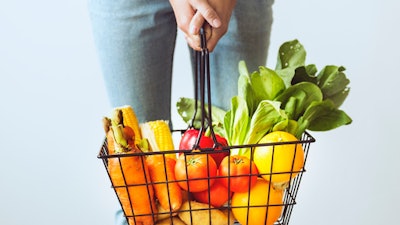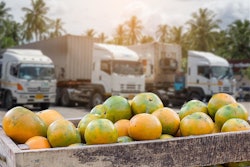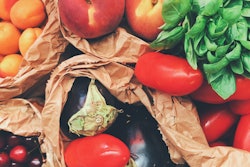
The Coronavirus disease (COVID-19) pandemic has changed the face of our nation and the world. The comforts and culture we took for granted as a country have forever changed. No longer do we have the luxury of grocery shopping on a whim, picking something up on our way home from work (now that we work from home) or planning celebratory dinner occasions outside of the home. And, we’ve taken on the role of private chef, home economist and other duties as assigned.
But, what does this New Normal mean for the short- and long-term health of our vertically integrated supply chain? How will the businesses along the fresh produce supply chain, charged with the burden of feeding families here in the United States and those around the world, continue to meet their calling?
The impact on the fresh produce industry has been catastrophic. Demand from consumers for fresh produce still remains high, and in some reports, continues to see growth, but over the course of 48 hours in March, the demand put an unpredicted strain on the supply chain.
The nation’s economy shuttered, and distribution networks – hit particularly hard – with business models designed to provide fresh produce to schools, restaurants and hospitality suddenly finding themselves without customers. Traditional avenues where consumers accessed a significant amount of their daily produce intake vanished, with reports of fresh produce being plowed under in fields across the nation.
It defies logic, but it is the current state of reality across the fresh produce supply chain.
That’s why United Fresh Produce Association and its members work to address these challenges.
The development of recently announced programs from USDA’s Agricultural Marketing Service (AMS) and others are encouraging and will help alleviate some of the hardships our supply chain has endured, but it’s just a start.
The impact of the pandemic has not just rattled our domestic food supply chain, it has implications around the globe for import and export markets that were already under tremendous strain due to an environment of trade, labor and food safety challenges. The pandemic factor is compounded through the lens of international trade and the rules and regulations that govern business throughout the globe.
It seems that with each silver lining, there’s still a storm brewing below. The reduction in commuter traffic and unessential travel has reduced delays that often plagued international food trade at the borders.
However, a decline in economic activity may also provide a guide-path to reforms needed in the system.
“The U.S.-Mexico border remains open and unimpeded for commercial traffic, and many produce companies in Texas are reporting shorter crossing times for trucks hauling fresh produce across the bridges due to lighter passenger traffic,” says Dante Galeazzi, president of the Texas International Produce Association. “Customs and border protection staffing remains at pre-pandemic levels for our area, and we’ve been engaging constantly with the federal partners at the border to ensure continued communication during these tumultuous times.”
Communication with federal partners at the border is also critical to maintaining import traffic. The same channels of communication facilitating the movement of food products also allow for a streamlined system of workers who participate in the H-2A visa program for agriculture to continue to work efficiently and travel without concern. Ensuring that borders remain open to support both the import and export of food –essential to survival – and also for those employed to harvest, pack and process these products is key to the nation’s food supply and economy in these uncertain times.
Imports have suffered during the recent months. Compounded with a reconfigured supply chain, this drop is not unexpected.
“Import volume, unfortunately, is experiencing a slight down-tick. Weather events in Mexico have impacted availability early in the year (February fresh produce imports from Mexico were down 4.1% vs. the year prior), but as the pandemic and shelter-in-place orders began to take hold in the U.S., we saw a continued decrease in imports through March, down 1.6% from the previous year. April will likely experience further decrease, as retail sales leveled and foodservice channels in the U.S. ceased during the nation-wide shutdown,” adds Galeazzi.
Trade agreements prior to the pandemic were top of mind for United Fresh’s administration, and most had been renegotiated. The good news is that the United States and Mexico are in agreement that the stream of food imports and exports is essential and should be maintained as such.
Food coming in through the southern border is happening efficiently despite disruption. Fresh produce leaving the United States, however, faces different challenges. The impact has not been as substantial with regards to the pandemic, but lingering issues with trading partners prior to the crisis persist, such as access to shipping containers for transport out of the country. Throughout the crisis, United Fresh and others have worked closely with agricultural partners to secure more freight capacity for exports. While more work is needed to repair the supply chain, the speed at which the industry was able to identify new challenges and work collectively to address them is a testament to the supply chain’s resilience.
What is imperative is that we continue to keep the supply chain gears greased in order to deliver the food products needed. As we accept the new realities of change, the supply chain must be ready to meet the needs of a re-conditioned society. The fresh produce sector is ready, willing and able to meet those needs and has already shown its ability to adapt at a moment’s notice.















